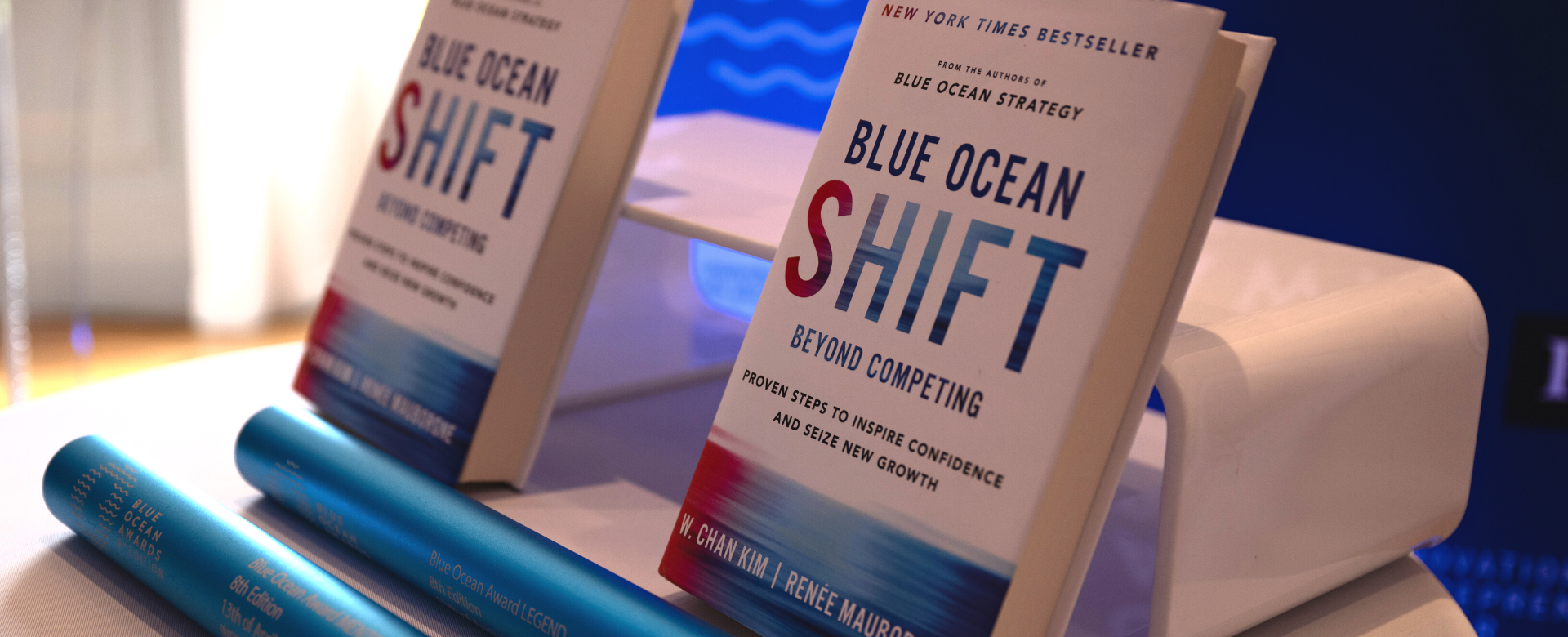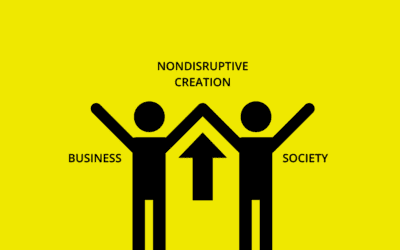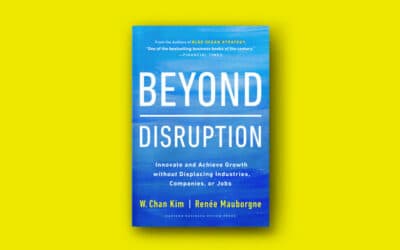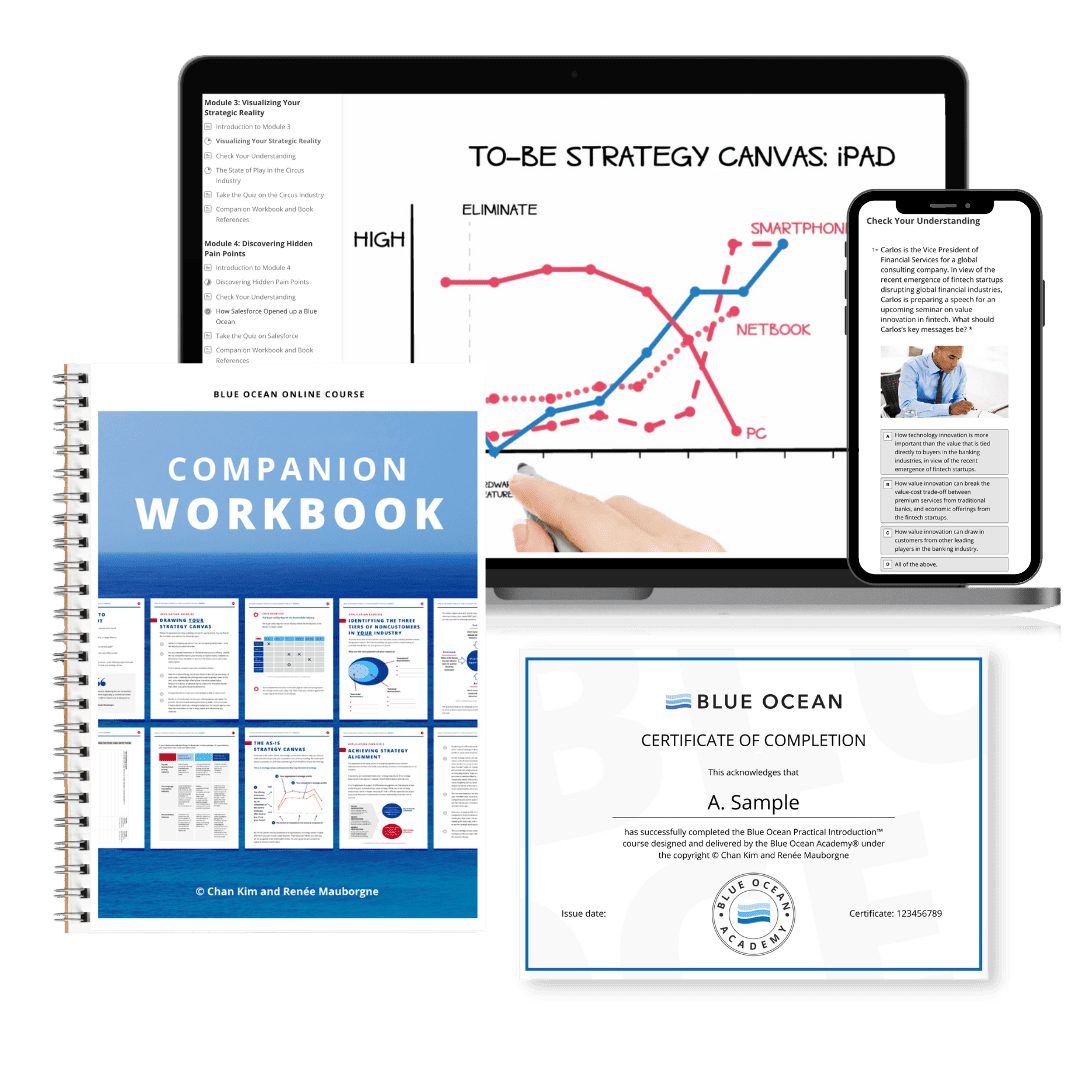Do you wish you had one simple picture that captured your overall business strategy – a picture that every manager, team member or a potential investor would understand?
Are you clear on what your industry or target industry competes on and invests in? Do you know what can set your product or service apart from the competition?
Get clear on the current state of play of your industry
Whether you’re a budding entrepreneur, or work for a large established company or small business, having a clear picture of the current strategic landscape is critical. Only then will you see how you can set yourself apart from the competition.
Our blue ocean tool, the strategy canvas, which is a self-assessment tool, allows you to see on one page how your business offering compares to those of your competitors.
Get your team and investors onboard with one single visual
The strategy canvas tells a story: it helps you see and understand where you and your competitors are currently investing, the factors your industry competes on, and what customers get from the different business offerings. It communicates four key elements of strategy:
1. The factors of competition the industry competes on
2. The offering level across these factors – e.g. do competitors in the current landscape offer more or less of any given factor?
3. Your organization’s strategic profile
4. Your competitors’ strategic profile
But it’s not just for existing businesses and organizations. A strategy canvas is highly effective if you want to start a new business. That’s because it shows you what you will be up against when entering the market. It’s also a great visual to present to potential investors and funders.
Create a strategy canvas for your organization today. We created a step-by-step tutorial on how to draw a strategy canvas which comes with a downloadable template.

Strategy canvas of the UK charity fundraising industry (pre-Comic Relief)
© Chan Kim & Renée Mauborgne, Blue Ocean Shift: Beyond Competing – Proven Steps to Inspire Confidence and Seize New Growth.
How Comic Relief made the competition irrelevant
Let’s look at the example of the charity fundraising industry in the UK. This is what the strategic landscape looked like before the launch of major British charity Comic Relief.
Across the horizontal axis are the key factors the charity industry has historically competed on and invested in. These range from calls for donations (or ‘pity pleas’) to year-round events. It’s important to note that the axis shows key competing factors not key value factors. That’s because there’s a crucial difference between the factors an organization competes on and those the buyers actually value.
In fact, what companies compete on can often fail to add value from a buyer’s perspective. For example, year-round fundraising can create donor fatigue instead of inspiring people to give. In the case of hotels, bellhops, expensive internet services, and other factors add little value, if any, to a traveler’s experience.
Running down the vertical axis of the strategy canvas are the offering levels. A high score on the vertical axis means the organization or company offers buyers, or in this case donors, more of something, while a low score shows they offer less.
By connecting the dots, you create a strategic profile that gives you a graphic depiction of your organization’s relative performance across the industry. And importantly, it gives you a graphic depiction of your competitors’ strategies. The result is what we call an ‘as-is strategy canvas’ because it shows you the current state of play in your industry.
The big picture: A crowded red ocean of me-too charities
We can see in our example of UK charities that the industry has become a red ocean of bloody competition. Although there are thousands of charities in the UK, from the donor’s perspective, they all look very similar. Their strategic profiles are mirror images of each other. And the strategic profiles of both large and small charities show that they both compete on the same factors but at different offering levels.
The exact same thing can be seen in the private sector. Think about all the major retail banks in New York, Paris, London and Tokyo. Are there any real differences in their facades, atmosphere or even service? From a buyer’s point of view, they all seem the same. What about gas stations the world over; or law firms or management consultancies. The players in those industries have very similar strategic profiles.
Creating your as-is strategy canvas is a critical step in changing that. It gets you to take a step back from the detail and see the big picture. It’s a crucial step in making the strategic shift that will set you apart from the competition.
Doing something funny for money: How Comic Relief stood apart
To make a blue ocean shift, your strategic profile can’t look like everyone else’s. It has to stand out so that when buyers think about your offering, they don’t lump it together with the offerings of other industry players.
To make a blue ocean shift and stand out to buyers, your strategic profile needs to meet three criteria:
1. The basic shape of your strategic profile on the strategy canvas has to significantly diverge from the industry’s average profile. It can’t just be a little more, or a little less, than what the competition does.
2. Your strategic profile has to be focused. It can’t just overdeliver or under-deliver on the same set of factors the rest of the industry competes on. Your strategic profile has to focus on the key factors that will offer buyers a leap in value, while eliminating and reducing those that they don’t actually value. This is how your strategy can simultaneously achieve lower costs while offering a leap in value.
3. Finally, your strategic profile has to have a compelling tagline that speaks to your buyers and honestly reflects what your offering provides. It can’t just be a wishful marketing slogan. Buyers see through empty slogans fast. A compelling tagline is an important initial litmus test to ensure that the divergence and focus behind your strategic profile are actually linked to a leap in buyer value (i.e., not a bit more or a bit less of what the competition does).
Let’s look into the strategic profile of Comic Relief, known as Red Nose Day in the United States. In an already crowded industry, Comic Relief raised over £950 million without spending any money on marketing. Nearly 30 years on, there are still no credible imitators. Learn more on what are the characteristics of a good strategy.
Putting the fun back in fundraising and eliminating donor fatigue
Conventional charity fundraising would provoke guilt and pity (think photographs of starving children) to raise money – mostly asking for large donations from high-income donors through year-round campaigns. Comic Relief replaced year-round fundraising with biannual events, eliminating donor fatigue.
Unlike traditional charities, Comic Relief recognized even the smallest donations, encouraging children who wanted to give their pocket money or people with modest incomes who wanted to contribute. Taking part costs as little £1 for a plastic red nose.
Comic Relief aligned its compelling value proposition with an unbeatable profit proposition. Traditional fundraising methods — hosting galas, mass-mailing, cold-calling and operating charity shops — create high overhead costs. Comic Relief eliminated 75% of costs related to traditional fundraising operations.
A blue ocean approach lowering costs and raising millions
The charity uses existing retail outlets to sell its red noses rather than running its own charity stores. Its administrative costs are negligible because it gives grants to other charities instead of running its own programs. Its fundraising costs are minimal given its community fundraising approach – anyone can raise money for Comic Relief.
And the star-studded televised Red Nose night doesn’t cost a penny. The TV network donates airtime while celebrities donate their time. Corporate partners cover outstanding operating costs. Over £71 million was raised in 2017 alone.
And what makes it sustainable? Comic Relief aligned value and profit propositions, with its people proposition. Instead of perceiving the public uniquely as donors, Comic Relief focused its strategy on inspiring volunteer fundraisers and corporate sponsors. To lure its army of volunteer fundraisers, Comic Relief made it fun and easy for anyone to volunteer. People don’t have to volunteer more than twice a year. And all they have to do is pick one of the fun and quirky activities listed on Comic Relief’s website. The community-led nature of the activities gives volunteers a sense of pride because friends, family and colleagues witness the contribution they’re making.
Let’s take a look at Red Nose Day’s strategic profile and go back to the three criteria that make a strategic profile stand apart. Red Nose Day’s strategic profile meets all three criteria:
1. Its shape diverges significantly from the competition.
2. It focuses on offering buyers a leap in value (recognition no matter how small a donation, transparency, fun, sense of belonging, etc.).
3. It has a compelling tagline that speaks to buyers and honestly reflects its offering: ‘Doing something funny for money’.

Strategy Canvas of Comic Relief: “Doing Something Funny for Money”
© Chan Kim & Renée Mauborgne, Blue Ocean Shift: Beyond Competing – Proven Steps to Inspire Confidence and Seize New Growth.
Now ask yourself – what does the as-is strategy canvas of your industry or target industry look like? What does it reveal about your strategic profile? Does it more or less follow the same shape as your competitors, or does it stand apart?
Get started on your strategy canvas to get clear on where you stand in your industry today. Only then will you start to see where you could be and how you can truly stand apart.
Check out these compelling strategy canvas examples from various industries to get inspired on your quest to create a blue ocean. Then draw a strategy canvas using our strategy canvas template and set yourself apart from the competition.
And read our blog on the importance of strategic alignment to a successful business strategy.

















